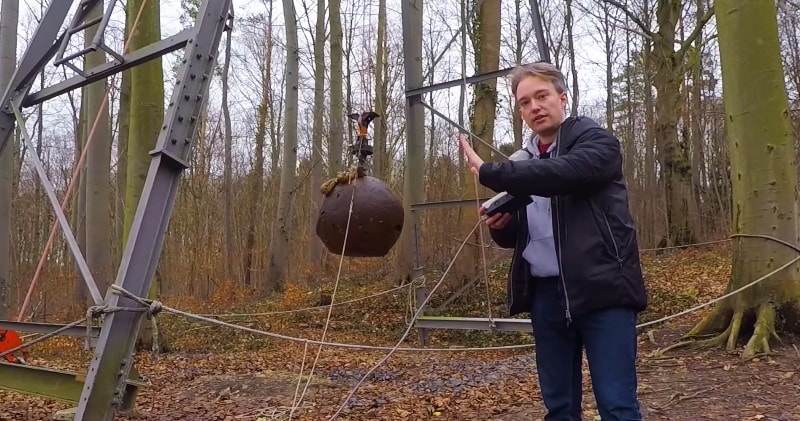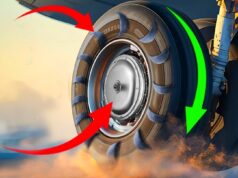In Göttingen, Germany, there’s a four-tonne steel ball that can be raised up a 14-metre tower — and then dropped in less than two seconds, crashing back to earth. It makes tiny, artificial earthquakes: here’s why.
image/text credit: Tom Scott
The information that these artificial earthquakes provide information of what’s happening beneath the ground in all directions.Earth tremors moved through the ground in two ways the P waves or primary waves compress the ground back and forth in the direction that the wave is traveling, squeezing it together.
Traveling slightly slower are the S waves the secondary waves which shear the ground side-to-side and those waves behave differently in duration and wavelength and intensity depending on the ground they’re traveling through.
Advertisement
The observatory team refill that pit every year to make the ground flat, and the ball just digs a hole again. The rock’s just being compressed underneath. They joke that, somewhere in Australia, there’s a slowly growing hill…And finally, the ground steams for a little while after the ball hits: it gets rather warm…











